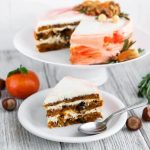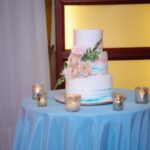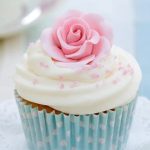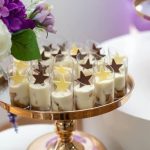Cake decorating is a beloved hobby for many, allowing individuals to express their creativity and create stunning edible works of art. While specialized cake decorating brushes are readily available, you may be wondering if it is possible to achieve similar results using normal paint brushes. This article delves into the possibilities of using normal paint brushes for cake decorating and explores the various techniques and considerations involved.
When it comes to cake decorating, there is a wide range of tools on the market designed specifically for this purpose. However, if you are just starting out or want to experiment with different techniques, using normal paint brushes can open up a world of possibilities. From painting intricate designs to adding delicate details, normal paint brushes can provide the finesse and precision needed to elevate your cake decorating skills.
Before diving into how to use normal paint brushes for cake decorating, it is important to understand the differences between these brushes and those specifically designed for this craft. Normal paint brushes typically have longer bristles and come in a variety of shapes and sizes. They also tend to be less expensive than specialized cake decorating brushes. However, there are certain characteristics that set them apart – from the types of bristles used to the food-safe coatings or lack thereof.
Throughout this article, we will explore the pros and cons of using normal paint brushes for cake decorating, along with safety precautions and tips for preparing and cleaning them for edible use. We will also delve into different techniques that can be achieved with these versatile tools and provide step-by-step tutorials for creating stunning cake designs.
Whether you are a beginner or an experienced cake decorator looking to expand your horizons, this article aims to guide you through the world of cake decorating with normal paint brushes and help you unleash your inner artist.
Understanding the Basics
When it comes to cake decorating, using the right tools can make all the difference. One of the key components in achieving beautifully decorated cakes is the choice of brush. While normal paint brushes may seem like a convenient option for cake decorating, there are some important differences between them and specialized cake decorating brushes that every baker should be aware of.
The first major difference lies in the bristles. Normal paint brushes typically have synthetic or natural bristles that are designed for use with oil or acrylic paints. These bristles are not food safe and may shed or contaminate the cake. On the other hand, cake decorating brushes are specifically made with food-grade materials and have softer, more flexible bristles that allow for intricate painting.
Another crucial factor to consider when comparing normal paint brushes to cake decorating brushes is their design. Cake decorating brushes often have tapered or pointed tips, which make it easier to create fine lines and intricate details on cakes. In contrast, normal paintbrushes usually have flat tips that are better suited for broader strokes on canvas or paper.
Additionally, many cake decorating brushes also have ergonomic handles that provide better grip and control while working on delicate designs. This can be especially important when handling edible paints or metallic dusts commonly used in cake decorating.
The Pros and Cons
Using normal paint brushes for cake decorating can offer both benefits and limitations. Understanding these pros and cons can help you decide whether or not to use paint brushes for your cake creations.
One of the main benefits of using normal paint brushes for cake decorating is their accessibility and affordability. Paint brushes can easily be found in art supply stores, craft stores, or even in your own home. They come in a variety of sizes, shapes, and bristle types, allowing you to experiment with different effects and techniques on your cakes.
Additionally, purchasing paint brushes is often more cost-effective compared to investing in specialized cake decorating brushes. This accessibility and affordability make normal paint brushes an attractive option for beginners or those on a limited budget.
However, there are limitations to using normal paint brushes for cake decorating. The primary concern is hygiene and food safety. Normal paint brushes may contain residues from previous use with non-edible materials such as paints or chemicals, posing a risk of contaminating the cake. To mitigate this risk, it’s crucial to designate specific paint brushes solely for edible use. Additionally, regular cleaning and sterilization procedures are necessary before each use to ensure the safety of your cakes.
Another limitation is the stiffness of the bristles in traditional paintbrushes compared to specialized cake decorating brushes. Cake decorating requires delicate touch and control over icing or other edible mediums. Normal paintbrushes may have bristles that are too stiff or prone to shedding, which could affect the smoothness and precision required for intricate designs on cakes.
Safety First
Tips for Preparing Normal Paint Brushes for Edible Use
When using normal paint brushes for cake decorating, it is crucial to ensure that they are safe and suitable for edible use. Here are some tips to prepare your normal paint brushes before using them on your cakes:
- Choose food-grade brushes: Look for brushes that are specifically labeled as food-grade or edible. These brushes are made with materials that are safe for contact with food, ensuring that there will be no harmful substances transferred onto the cake.
- Remove any loose bristles: Before using a new paint brush, gently tug on the bristles to check if any of them come loose. If you find any loose bristles, pluck them out to prevent them from ending up on your cake.
- Wash and sanitize the brush: Even if the paint brush is brand new, it is important to clean it thoroughly before using it on a cake. Wash the brush with warm soapy water and rinse it well to remove any dust or residue. Then, sanitize the brush by soaking it in a mixture of water and food-safe sanitizing solution recommended by the manufacturer.
Cleaning Normal Paint Brushes after Cake Decorating
After you have finished using the normal paint brushes on your cake, it is vital to clean them properly to maintain their quality and keep them sanitary for future use. Follow these steps to clean your brushes effectively:
- Rinse off excess icing or color: Hold the brush under running water and gently massage out any remaining icing or color from the bristles.
- Cleanse with mild dish soap: Use a small amount of mild dish soap and warm water to wash the brush thoroughly. Gently swirl the bristles in the soapy water to remove any traces of icing or color.
- Rinse well: After washing, rinse the brush under running water until no soap residue remains.
- Air dry properly: Once the brush is clean, reshape the bristles gently and lay the brush flat to air dry. Avoid using excessive heat or direct sunlight to speed up the drying process as it can damage the bristles.
By following these preparation and cleaning tips, you can ensure that your normal paint brushes are safe and hygienic for use in cake decorating projects.
Getting Creative
Brush Strokes and Textures
One of the advantages of using normal paint brushes for cake decorating is the ability to create unique brush strokes and textures on your cakes. With a wide range of bristle types and shapes available in regular paint brushes, you have the freedom to experiment with different techniques and achieve various effects. Whether you want to create smooth lines, delicate details, or rough textures, using normal paint brushes can give your cakes a distinctive look.
Watercolor Effects
Normal paint brushes allow you to explore watercolor-like effects in cake decorating. By diluting food coloring or edible paints with water and applying them with a brush, you can achieve a soft and subtle look on your cakes. This technique works particularly well for watercolor-inspired designs, floral patterns, or abstract backgrounds. The bristles of a paint brush can help blend colors seamlessly and create beautiful gradients on your cakes.
Dry Brushing
Dry brushing is another technique that can be easily achieved with normal paint brushes. It involves using very little or no moisture on the brush to apply color lightly and create a textured or aged effect. This technique is commonly used in creating vintage or rustic designs on cakes. Normal paint brushes with stiff bristles are especially suitable for dry brushing as they hold less moisture and allow for greater control over the application of color.
By exploring these different techniques for cake decorating with normal paint brushes, you can add depth, texture, and uniqueness to your creations. However, it’s important to keep in mind that not all normal paint brushes are suitable for edible use. In the next section, we will discuss some tips for preparing and cleaning regular paint brushes to ensure their safety when used with food products.
Exploring New Horizons
Normal paint brushes are not only limited to traditional painting activities, but they can also be used in cake decorating to achieve unique and artistic designs. The versatility of normal paint brushes allows for endless possibilities when it comes to creating stunning cake designs that are sure to impress. In this section, we will explore the various ways in which normal paint brushes can be utilized in cake painting.
One of the main advantages of using normal paint brushes in cake decorating is the wide range of brush sizes and shapes available. This variety allows decorators to create different textures and patterns on their cakes, from fine details to bold strokes. For example, a small round brush can be used to create intricate floral designs or delicate lettering, while a larger flat brush can be used to apply broad strokes for a more abstract or impressionistic effect.
Additionally, normal paint brushes offer the opportunity for experimentation with different techniques. One popular technique is “dry brushing,” where a small amount of icing or edible paint is applied to a dry brush and then lightly brushed onto the cake’s surface.
This technique creates a soft and subtle texture that adds depth and dimension to the design. Another technique is “splattering” or “flicking,” which involves loading the brush with icing or edible paint and then quickly flicking it with your fingertips to create splatter-like speckles on the cake.
To make the most out of using normal paint brushes in cake painting, it is important to properly prepare and clean them for edible use. Before using any new brush, it should be thoroughly washed with warm soapy water and rinsed well. It is also essential to designate specific brushes solely for food use, separate from those used for non-edible paints. Regularly inspecting your brushes for any signs of wear or damage is crucial as well.
Expert Insights
In this section, we will gain insights from experienced cake decorators who have successfully used normal paint brushes for cake decorating. These interviews will provide valuable tips and tricks for those interested in exploring the possibilities of using normal paint brushes in their cake designs.
One of the cake decorators we interviewed is Sarah Johnson, who has been using normal paint brushes for cake decorating for over 10 years. According to Sarah, one of the main advantages of using normal paint brushes is the wide variety of brush shapes and sizes available. She stated, “Normal paint brushes come in a range of bristle types, lengths, and thicknesses which allows for more versatility in creating different textures and details on cakes”.
Another experienced cake decorator we spoke to is Michael Thompson. He explained that using normal paint brushes gives him more control over his designs. “With regular paint brushes, I can achieve finer details and precision when painting intricate patterns or lettering on cakes,” Michael shared. He also emphasized the importance of using food-safe materials when choosing paint brushes for edible use.
| Advantages | Disadvantages |
|---|---|
| Wide variety of brush shapes and sizes | Potential cross-contamination if not properly cleaned |
| Ability to achieve finer details and precision | Possible shedding of bristles onto the cake surface |
| Versatility in creating different textures and details | Limited availability of food-safe options in certain areas |
From these expert insights, it is clear that using normal paint brushes for cake decorating can offer advantages in terms of versatility, control, and the ability to achieve finer details. However, it is important to consider the potential disadvantages such as cross-contamination and shedding of bristles onto the cake surface. With proper preparation and cleaning techniques, as well as selecting food-safe brushes, decorators can successfully utilize normal paint brushes in their cake designs.
DIY Alternatives
Using normal paint brushes for cake decorating may not be the conventional method, but it can certainly be a cost-effective and creative alternative. Making your own cake decorating brushes using normal paint brushes allows you to customize the size and shape of the brush to suit your specific cake design needs. This section will explore the process of transforming a regular paint brush into a suitable tool for cake decorating.
To make your own cake decorating brush, you will need a few basic materials: a clean, unused paint brush of your desired size, food-safe materials (such as nylon bristles or natural fibers), and food-grade adhesive. Start by removing any existing paint residue from the brush. Then, carefully trim the bristles to achieve the desired shape and length.
Nylon bristles are typically favored for their durability and ease of cleaning. However, if you prefer a more natural option, consider using animal hair or plant-based fibers like horsehair or hog bristle.
Once you have trimmed the bristles to your liking, securely attach them to the handle using food-grade adhesive. Be sure to use an adhesive that is safe for edible applications and dries clear. Allow sufficient time for the adhesive to dry before using your homemade cake decorating brush. It is also important to note that these DIY brushes should be reserved solely for cake decorating purposes and not used with any non-edible paints or materials.
| Materials Needed | Process |
|---|---|
| Clean, unused paint brush | Remove any existing paint residue from the brush. |
| Food-safe materials (nylon bristles or natural fibers) | Carefully trim the bristles to achieve desired shape and length. |
| Food-grade adhesive | Securely attach trimmed bristles to the handle using food-grade adhesive. |
Making your own cake decorating brushes not only gives you control over the shape and size of the brush, but it also allows you to experiment and explore different techniques without breaking the bank. Whether you’re looking to create intricate details or bold strokes on your cake, a DIY brush can be tailored to suit your artistic vision.
Remember to clean your homemade cake decorating brushes thoroughly after each use. Use warm water and gentle soap to remove any remnants of icing or food coloring. Allow the brushes to air dry completely before storing them in a clean and dry place. Regular cleaning and proper storage will ensure that your brushes remain hygienic and ready for future use.
So, if you’re feeling adventurous and want to try something different in your cake decorating journey, why not give DIY alternatives a go? Making your own cake decorating brushes using normal paint brushes can open up a world of possibilities for unique designs and techniques. With a little creativity and some basic materials, you can unleash your inner artist and create stunning cakes that are truly one-of-a-kind.
Unleashing Your Inner Artist
For those who are looking to unleash their inner artist and create stunning cake designs using normal paint brushes, there are a variety of step-by-step tutorials available. These tutorials provide detailed instructions on how to achieve different techniques and designs using brushes typically used for painting.
One popular technique that can be achieved with normal paint brushes is watercolor painting. By diluting food coloring with water, you can create beautiful, translucent washes of color on your cake. To begin, dip your brush into the diluted food coloring and start applying it onto the cake in gentle strokes. Gradually build up the color by layering the washes until you achieve the desired effect. Experiment with different colors and blending techniques to create unique watercolor designs.
Another technique that can be explored is brush embroidery. This technique involves piping royal icing onto the cake in a specific pattern and then using a damp paint brush to create texture and dimension. Start by piping a design onto the cake, such as flowers or lace patterns.
Once the icing has slightly dried, use a clean paint brush that has been dipped in water to gently stroke over the piped design. The moisture from the brush will soften and spread the icing, creating delicate embroidered details on the cake.
If you’re looking for more precision in your designs, you can try using fine-tip paint brushes for intricate decorations such as lettering or intricate patterns. Practice beforehand on a piece of parchment paper or wax paper to get comfortable with handling the small brushes before transferring your design onto the cake.
While there are endless possibilities when it comes to exploring different techniques for stunning cake designs using normal paint brushes, it’s important to keep in mind some key tips for success. Ensure that your brushes are thoroughly cleaned before each use to avoid any cross-contamination between different colors or ingredients.
Additionally, make sure that you are using brushes that are designated for edible use, as regular paint brushes may contain chemicals or materials that are not safe for consumption. Taking these precautions will help ensure that your cake designs not only look beautiful but are also safe to eat.
By following step-by-step tutorials and experimenting with different techniques, you can unleash your inner artist and create stunning cake designs using normal paint brushes. Whether you choose to try watercolor painting, brush embroidery, or fine-tip detailing, the possibilities for creativity are endless. With practice and patience, you’ll be able to create edible masterpieces that will impress both friends and family alike.
Conclusion
In conclusion, the use of normal paint brushes for cake decorating is a topic that has sparked much debate and controversy among both amateur and professional bakers. While normal paint brushes can offer a range of possibilities and creative techniques for cake painting, it is important to understand the key differences between them and specialized cake decorating brushes.
One of the main advantages of using normal paint brushes for cake decorating is their versatility. With a wide variety of brush shapes and sizes available, decorators have the freedom to experiment with different strokes, textures, and effects. This can lead to truly unique and captivating designs that are not easily achievable with traditional cake decorating brushes.
However, it is crucial to exercise caution when using normal paint brushes for edible purposes. The safety of your customers should always be prioritized, so it is recommended to thoroughly clean and prep normal paint brushes before using them on cakes. Additionally, it is important to only use food-safe materials that are free from any toxic chemicals or residues that could contaminate the cake.
Ultimately, whether you choose to use normal paint brushes for cake decorating or opt for specialized cake decorating brushes will depend on your personal preference, skill level, and the specific design you want to achieve. It may be worth experimenting with both options to see which works best for you in different scenarios.
Frequently Asked Questions
Can you use paint brushes for cakes?
While it is technically possible to use paint brushes for cakes, it is not recommended. Paint brushes that are typically used for art or craft projects may not be food-safe and could contain materials or chemicals that are not suitable for consumption.
Additionally, the bristles of a paint brush may be too stiff or rough, which could damage the delicate surface of a cake. It is always better to use specifically designed cake decorating tools that are made with food-grade materials and have soft, flexible bristles.
Can you use regular paint brush for food?
No, regular paint brushes should not be used for food purposes. Regular paint brushes are made with materials and pigments that are intended for use on non-edible surfaces like walls or canvas.
They are not designed to come into contact with food and may contain toxins or chemicals that can be harmful if consumed. When it comes to using brushes for food decoration, it is important to choose those that are labeled as food-safe and made specifically for culinary purposes.
Can you use paint brushes for frosting?
Yes, you can use certain types of paint brushes for frosting on cakes or other baked goods. However, it is essential to select brushes that are designated as food-safe and meant for culinary use. These brushes are typically made with food-grade materials, such as synthetic fibers or silicone bristles, which do not shed or contaminate the frosting when in contact with it.
Additionally, they should be clean and thoroughly sanitized before each use to maintain proper hygiene standards in the kitchen. It’s worth noting that some cake decorators prefer using specialized tools like offset spatulas or piping bags for applying frosting due to their precision and ease of use.

Welcome to my blog about home and family. This blog is a place where I will share my thoughts, ideas, and experiences related to these important topics. I am a stay-at-home mom with two young children. I hope you enjoy reading it! and may find some helpful tips and ideas that will make your home and family life even better!





